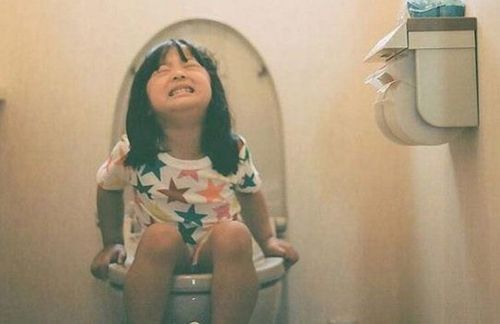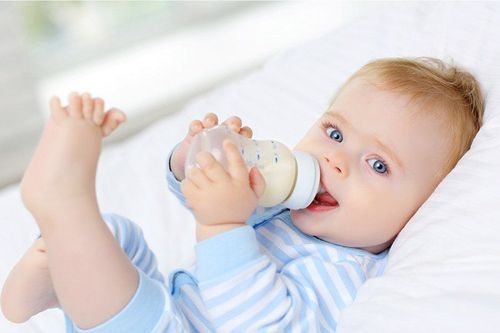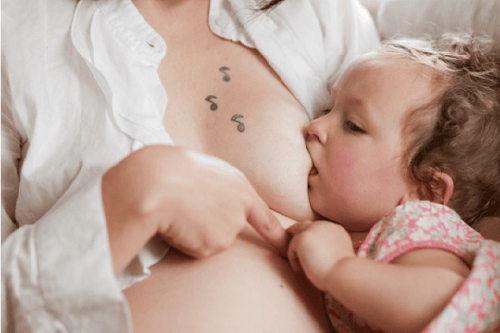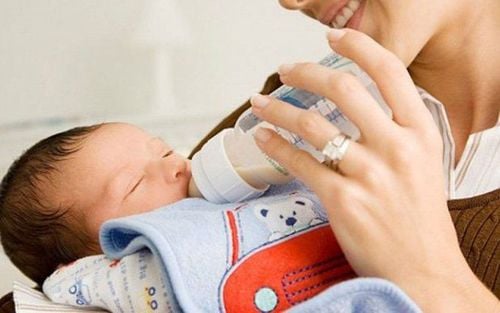This is an automatically translated article.
The article was professionally consulted with resident Doctor Ho Thi Hong Tho - Neonatologist - Department of Pediatrics - Neonatology - Vinmec Phu Quoc International General Hospital.Find out how often you bottle feed, why breast milk and formula shouldn't be mixed, how to warm baby bottles, feeding pacing and bottle hygiene tips, and more. .. These knowledge will be presented in the article below.
1. How often should a baby be bottle-fed?
Most experts say your baby shouldn't have to follow a rigid feeding schedule in the first few weeks, although you can create an approximate cycle within 1 or 2 months. Here are the progressions you can refer to:For the first few weeks, give your baby a bottle every 2 to 3 hours or when your baby seems hungry. If your baby sleeps longer than 4-5 hours, wake him up to feed. Newborns will probably lose about 30-60 ml per feed for the first few days. After those few days, your baby will usually eat about 60-90ml per feeding.
After about 1 month, your baby will probably drink about 120ml every 3 to 4 hours. As your baby grows, this amount will gradually increase over the next few months. At 6 months old, your baby will probably drink 180-240ml for 4 or 5 times a day.
Quantity may vary from feeding time. You should not encourage or force your baby to finish the bottle when he loses interest or becomes sleepy. Trust that your baby will eat enough to provide the body with the nutrients it needs. Your baby needs to be monitored by a doctor and they will let you know if he has eaten enough.
2. Can milk be saved for later if the baby does not finish the bottle?
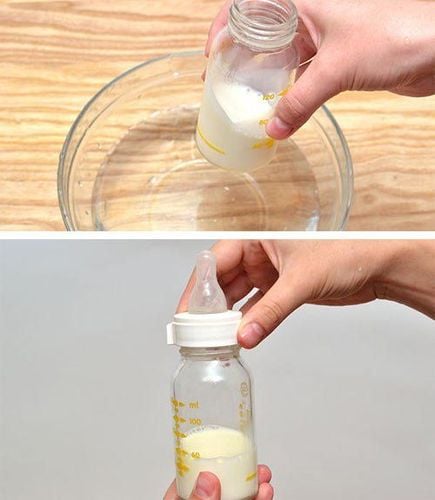
If baby drinks leftover breast milk: The antibacterial properties of breast milk give it a shelf life of two hours. After 2 hours, you should discard the excess milk.
3. Should breast milk and formula be mixed?
There is nothing unsafe about mixing breast milk and formula in the same container. But you don't want to waste a single drop of breast milk if you're pumping and supplementing with formula.To avoid having to throw away leftover breast milk mixed with formula, give your baby whatever breast milk you have expressed first. Then, if the baby is still hungry, continue with formula.
4. What is the best way to warm up the bottle?

Place it in a bowl of warm, not hot water until the bottle is warm, which usually takes up to 15 minutes. The water level should be below the mouth of the bottle. Gently rotate it a few times to make sure it heats evenly. Or you can place the bottle under warm running water until warm, about one to two minutes. Be careful not to get water on the nipple or into the bottle. Do not use a microwave oven to heat bottles of breast milk or formula. Microwaves heat unevenly, which can create hot pockets in the liquid that cause burns. Microwaves can also cause nutrients to break down. Warming milk isn't for the health of your baby while nursing, but your baby may prefer it to cold milk. If your baby is bottle-feeding at room temperature or a little cold well and likes it, you don't need to heat it up which can save time and hassle of warming bottles.
5. Signs that your baby is drinking comfortably?
For babies, listen and watch for the following signs:If you hear a lot of loud, noisy sucking while your baby is nursing, it could be that your baby is breathing in too much air. To help your baby swallow less air, hold him at a 45-degree angle. If your baby seems uncomfortable during feeding (creepy or fussy), take a moment to burp your baby. Never lift a bottle as it can cause your baby to choke. Feed your baby as soon as he shows signs of hunger. If your baby is too upset before feeding, he may have a hard time drinking milk calmly.
6. What is paced feeding?

Use wide, slow-flowing nipples. Hold the bottle horizontally to let the milk flow as your baby suckles on the nipple. If you tilt the bottle so that the milk flows continuously, your baby may receive too much milk, suck too much, or swallow too much air. Experiment to see what works best for your baby, and let them suck and swallow slowly and comfortably.
Instead of pushing the nipple into your baby's mouth, stroke your baby's lips with the nipple until baby opens wide.
Regularly stop (by gently using the bottle cap to stop the flow of milk or formula) during feeding so that your baby does not become engrossed. Switch sides as you would while breastfeeding.
Stop feeding your baby when he shows signs of fullness. Don't encourage or force your baby to finish a bottle when he's lost interest or is sleepy.
7. How to clean baby bottles and nipples?
Whatever cleaning method you use, make sure to wash your hands well before you begin.If you use glass or metal bottles: Run them through the dishwasher cycle using hot water and the hot drying cycle. Alternatively, wash your hands with hot soap and dry on a dish towel or paper towel in the air. If you use plastic bottles: Because heat can cause plastic to release harmful chemicals, the American Academy of Pediatrics recommends against putting plastic bottles in the dishwasher or submerging in boiling water. Instead, wash your hands with hot, soapy water and air dry with a dish towel or paper towel. If you're using boiled water to make formula, let it cool before pouring it into a plastic bottle. If you use nipples: Whether you're washing by hand or using the dishwasher, separate the nipples and rinse them under running water. Place them in the dishwasher in an airtight basket or mesh laundry bag. If not completely dry when the cycle is complete, place them on a dish towel or paper towel to air dry. To wash your hands, place the washed pacifier in a basin of hot, soapy water. Scrub with a clean brush used only for washing baby utensils. Squeeze the water over the nipples to make sure they're clean. Rinse them under running water, then air dry on a dish towel or paper towel.
8. Do you need to sterilize baby bottles?

Your first time using a new bottle or teat If you have well water or are concerned about the quality of the water If your baby is born prematurely or with a weakened immune system If your baby is already sick, to prevent bacteria or germs from reproducing when you feed him Talk to your pediatrician if you have questions about having a baby. Should the bottle be sterilized or not? Ways to sterilize baby bottles include:
Do not use heat-based methods such as boiling water, steam or dishwashers to clean plastic bottles as heat can cause the plastic to release harmful chemicals. Bleach: Soak glass, metal, or plastic bottles in a solution of 2 teaspoons of unscented bleach per gallon (16 cups or 128 ounces) of water in a clean wash basin for at least 2 minutes. Any remaining bleach will spoil as it dries. You can use bleach to disinfect parts of plastic bottles. Boil water: Submerge glass or metal bottles in boiling water for at least five minutes. Steam: Use a countertop or microwave bottle sterilizer. Follow the manufacturer's instructions. Dishwasher: Run glass or metal bottles through a dishwasher cycle using hot water and a hot drying cycle or sterilization setting. If bottles get wet after sterilizing, let them air dry on a dish towel or paper towel. Children in the period from 6 months to 3 years old are very susceptible to respiratory problems, respiratory infections, skin diseases and gastrointestinal infections... parents need to pay special attention to the care and provision of adequate nutrition for children.
Children who do not eat properly are at risk of micro-mineral deficiency causing anorexia, growth retardation, malabsorption,... If they notice the above signs, parents should supplement their children with products. The supplement contains lysine, essential micro-minerals and vitamins such as zinc, chromium, selenium, and B vitamins to help fully meet the nutritional needs of children. At the same time, these essential vitamins also support digestion, enhance nutrient absorption, help improve anorexia, and help children eat well.
Parents can learn more:
Signs of zinc deficiency in children
Micronutrient deficiency and failure to gain weight in children
Please regularly visit Vinmec.com website and update useful information to take care of your child. Take care of the baby and the whole family.
Please dial HOTLINE for more information or register for an appointment HERE. Download MyVinmec app to make appointments faster and to manage your bookings easily.
Reference source: babycenter.com





